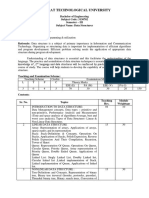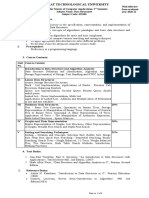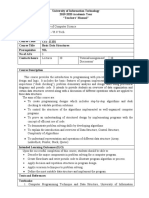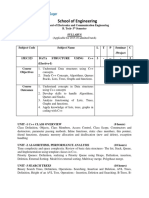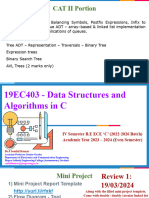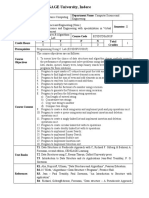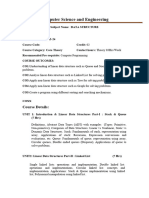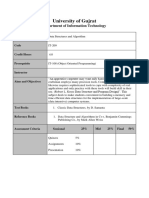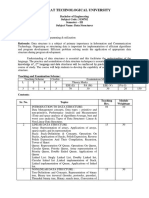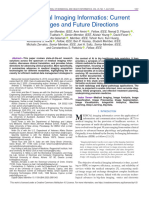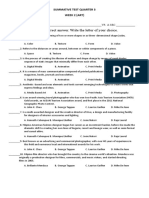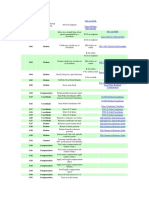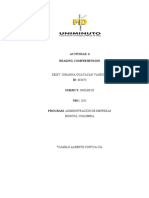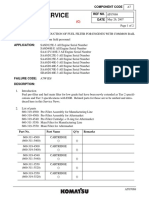0% found this document useful (0 votes)
105 views4 pagesData Structure
The document outlines the course structure for the Data Structure subject under the Bachelor of Computer Applications program at Gujarat Technological University for the academic year 2024-25. It details the course objectives, outcomes, teaching scheme, content distribution, assessment patterns, and recommended resources. The course aims to develop proficiency in data structures, algorithmic paradigms, and their applications, with practical implementations in various data structures and algorithms.
Uploaded by
kskavya65Copyright
© © All Rights Reserved
We take content rights seriously. If you suspect this is your content, claim it here.
Available Formats
Download as PDF, TXT or read online on Scribd
0% found this document useful (0 votes)
105 views4 pagesData Structure
The document outlines the course structure for the Data Structure subject under the Bachelor of Computer Applications program at Gujarat Technological University for the academic year 2024-25. It details the course objectives, outcomes, teaching scheme, content distribution, assessment patterns, and recommended resources. The course aims to develop proficiency in data structures, algorithmic paradigms, and their applications, with practical implementations in various data structures and algorithms.
Uploaded by
kskavya65Copyright
© © All Rights Reserved
We take content rights seriously. If you suspect this is your content, claim it here.
Available Formats
Download as PDF, TXT or read online on Scribd
/ 4








